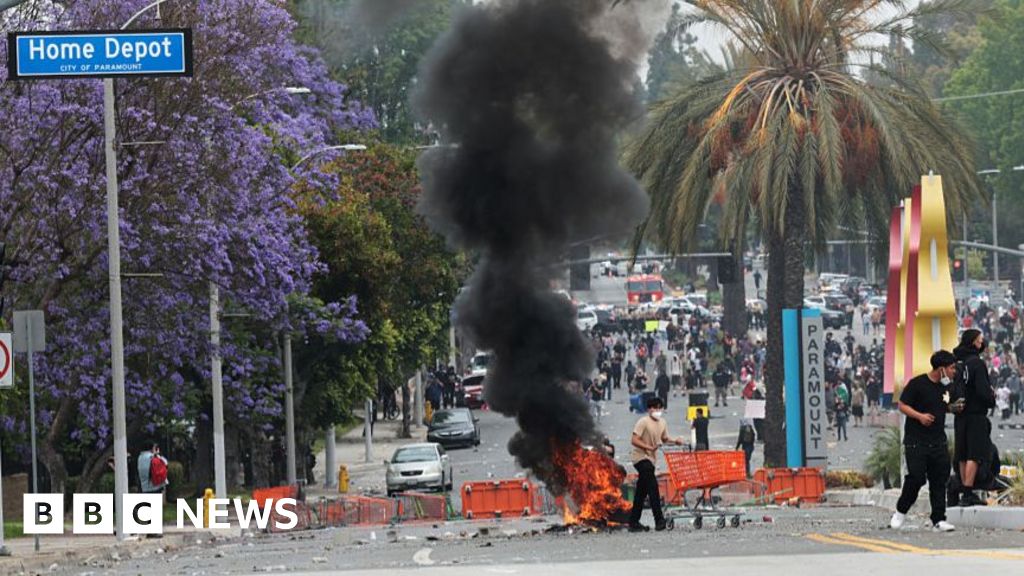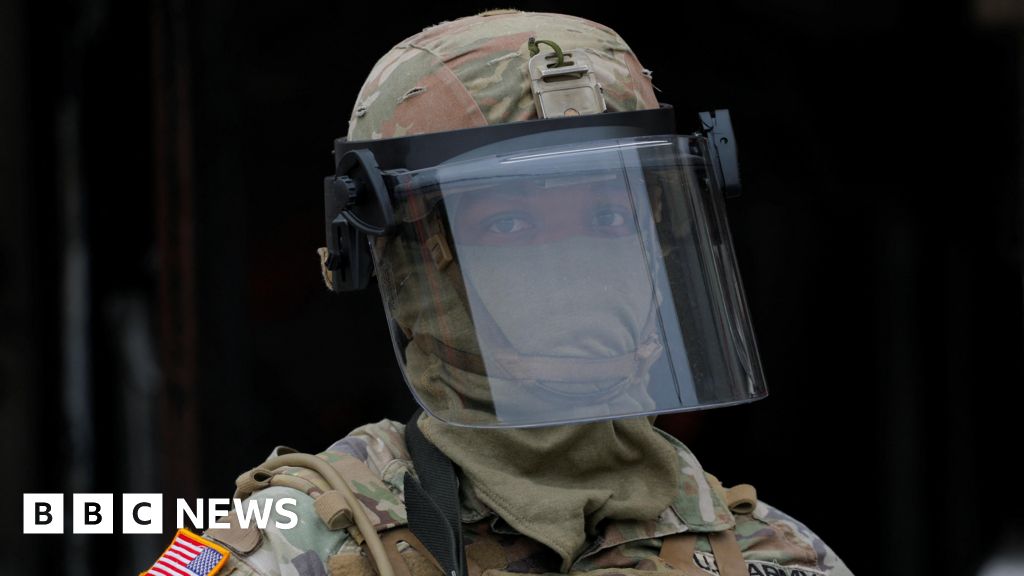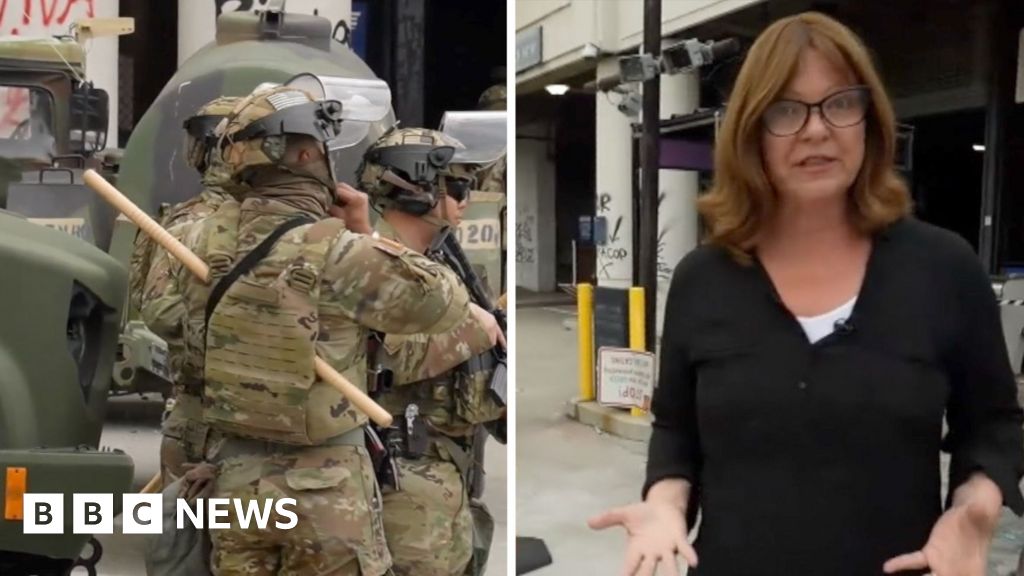ARTICLE AD BOX
Watch: Orange skies loom over Canada after wildfire
By Brandon Drenon
BBC News
The province of Alberta, Canada, home to more than four million people, is under a state of emergency, as nearly 100 wildfires burn, dozens of them out of control.
Since the first local state of emergency was declared on 4 May, over 782,000 hectares of land - 1.9 million American football fields or more than 3,000 square miles - have burned, local officials said.
Thousands of firefighters and support staff from across Canada and the US have descended upon the area to fight the ceaseless flames.
Still, there are 93 active wildfires in Alberta as of 12:00 EST (17:00 BST) on Friday, and experts say the end is nowhere in sight.
Early data suggests this wildfire season could be one of the worst on record.
Why is it so bad?
Wildfires in Alberta are typical in May, said Terri Lang, a meteorologist with Environment and Climate Change Canada.
During the spring, the snow begins to melt, exposing the twigs, branches, and dead leaves beneath. Experts refer to this as "fuel".
Warm temperatures and dry conditions increase the fuel's flammability.
But this year, Alberta was subject to both record-breaking heat and below-average rainfall.
"That just exacerbated the whole situation," Ms Lang said.
Image source, Getty Images
Image caption,Warmer temperatures and less rainfall have created ripe conditions for intense wildfires
From the middle of February to the middle of May, the majority of central and northern Alberta received 50% less rainfall this year than the typical 90-day average over the same period, Ms Lang said, and 75-100% less in some parts of the area.
Meanwhile, average temperatures were 3-6C higher, she said.
Heat records across Alberta were broken 158 times between 1-15 May alone, Ms Lang said.
"It's alarming. We've seen similar events, but not this early in the year," she said.
"The amount of smoke being belched out by these fires is unbelievable. It's covering pretty much all of western Canada. And that has effects on people too."
Living under clouds of smoke
Marilyn Hamelin, 59, lives in High Prairie, Alberta, amid the smoke and ashes blanketing her town from the wildfires roaring roughly 10km (6 miles) away.
High Prairie has been under official evacuation alert since 12 May, where automatic alerts interrupt the TVs, radios, tablets and cell phones of residents daily, warning them of how imminent an official evacuation may be.
"I'm scared," she said. "It just seems gloomy out all the time. There's no sun or anything."
Ms Hamelin, who said she has chronic lung disease, was rushed to the hospital in the beginning of May after suffering a severe sudden bout of pneumonia, which she blames on the smoke.
"My roommate called my brother to come pick me up," she said, recalling the incident. "I couldn't breathe. I was gasping for air."
Going in and out of consciousness, she said her brother drove her to McClennan Hospital, roughly 35 minutes away, because the hospital in her town was forced to close.
Some facilities in High Prairie, including nursing homes and hospitals, shutdown as a precaution and vulnerable groups were evacuated. High Prairie Hospital has since reopened.
Although Ms Hamelin is back home, she lives in constant paranoia of another pneumonia attack as smoke-filled skies remain.
"I kind of feel like it's coming back again, from the smoke," she said. "I just stay inside the house, waiting to see if we have to evacuate."
'No telling when this could end'
By 16 May, 19,576 people had been forced to evacuate their homes in Alberta, officials said. Since then, the number of evacuees has dropped to 10,523.
"We are only in mid-May," said Josee St-Onge, an information officer with Alberta Wildfire. "Our wildfire season usually goes until the fall."
The 782,000 hectares that have already burned are nearly seven times higher than the five-year average for the same period, she said, which is 123,000 hectares.
"What's unusual and makes it more challenging is that instead of seeing one big wildfire in a specific part we are seeing a lot of wildfires spread across the territory," Ms St-Onge said.
"There's going to be a lot of work to bring these wildfires under control."
Image source, Reuters
Image caption,Thousands of firefighters and support staff have descended upon Alberta to aid relief efforts
Ms St-Onge said 1,600 firefighters and support staff from Canada are in the area battling the blazes, plus over 1,000 more from other agencies in North America, including the US.
Mike Flannigan, research chair for predictive services, emergency management and fire service at Thompson Rivers University, said: "My colleagues and I are attributing this largely to human-caused climate change."
"As our climate warms, we can expect to see more fire, more smoke," he said. "Not every year, but on average, we are going to see more bad fires."
Image source, Getty Images
Image caption,The smoke from the wildfires poses a health risk to those in the area
Experts struggle to predict when this year's wildfires in Alberta will fizzle out.
"We need a lot of rain for a very long time to really get a handle on what's happening," said Ms Lang from Environment Canada.
"And that's not showing up in the weather models. So there's really no telling of when this could end."

 2 years ago
34
2 years ago
34








 English (US) ·
English (US) ·